G. L. Pease
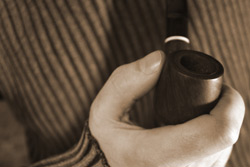 Winter burst through the door this year with a battering ram. Here in California, we’ve seen some record low temperatures. Not that I’m complaining; I realize that a cold winter in the Bay Area is laughably balmy for those in more Arctic climes. Like Minnesota. Still, when we see temperatures below 20˚F this early in the season (that’s -6˚C for the rest of the world), people talk about it.
Winter burst through the door this year with a battering ram. Here in California, we’ve seen some record low temperatures. Not that I’m complaining; I realize that a cold winter in the Bay Area is laughably balmy for those in more Arctic climes. Like Minnesota. Still, when we see temperatures below 20˚F this early in the season (that’s -6˚C for the rest of the world), people talk about it.
For me, some of the good things that winter brings are soups and stews, braised meats, root veggies fragrantly roasted in the oven. This year, that last thing would be a bit of a problem, since my oven broke down some time during the spring, and I never got round to either fixing or replacing the thing.
It was an old stove, a hand-me-down given to me when the previous, much older stove was acting out in nefarious ways. But it served well for a few years, and though I wanted something newer, shinier, better, maybe even with an oven that didn’t conspire to cremate everything I put in it if I didn’t watch it with an eagle’s eyes, I just couldn’t bring myself to spend the money. When the thing decided to go out on strike, I simply moved to the grill when need arose. It was warm out, after all, a perfect excuse to spend some time outside with pups and pipe, tending the grill in that manly way that we men adopt when playing with fire. Who needs a freakin’ oven, anyway? We’re men. Manly men. With fire.
Then November crept up and beat me over the head with an icy cudgel. Thanksgiving was round the corner, and for that I’d need an oven. Grilled pies work only marginally better than grilled cookies, which don’t work at all. Not one to put things off until the very last minute, I boldly went out on Monday, yes, the Monday before Thanksgiving, paid my money, and accepted the earliest delivery for Wednesday morning. We all know that Thanksgiving falls on Thursday, right? (Now is the time when you might be wondering, “What the hell does this have to do with pipes and tobaccos?” I’m coming to that.)
The new stove has big burners with electric igniters and a touch panel to make the oven do ovenly things. The technology, I sussed out pretty quickly. The big burners? Not so much. Suddenly, the “medium” position on the dials took on an incendiary new meaning. The biggest burner goes from take-off to afterburner with an effortless twist, and for the first time in years, I incinerated things. Quickly. I never considered the fact that I might actually have to learn how to fly this brand new plane, and only had one day before taking on passengers. Long story short, the house is still standing, Thanksgiving flew by with only a few recoverable stalls, and I’m becoming increasingly comfortable with the new jet range.
Often, when we get new pipes or a new tobaccos, we treat them as though we know what we’re doing. Sometimes, we’re thrown a curve. Getting to know new things is part of the fun of the exploration of briar and leaf. A new tobacco might be stronger than what we we’ve become accustomed to, taking us on a spinning ride on the Tilt-A-Whirl. Or a new pipe may have a different chamber geometry from what we’re used to, requiring different packing methods, different smoking techniques. The variables are many. There’s the lesson from the new range: Take a little time with the process, approaching things slowly, mindfully, getting familiar with the controls. It might make those first flights more enjoyable, and keep you from burning the turkey.
On to the Q&A.
Jose writes: I am new at this site and I would like to ask. What are Vaper Tobaccos?
A: The list of abbreviations, initializations and acronyms regarding tobaccos can be dizzy-making, and seems to be growing. I often find myself scratching my head when reading the forums and some new shorthand appears. This one, fortunately, only required a little context, not the Rosetta Stone to decode.
Vaper refers to blends of virginia (VA) and perique. It’s a rich category with many representatives. Typing virginia/perique blend would get tiresome pretty quickly, so some somewhere along the road, I think within the last ten years, someone coined the term “Vaper” to describe them, and it quickly made its way into circulation, becoming widely used, predominately by the on-line pipe community. It’s brought a whole new meaning to “getting the Vapers.”
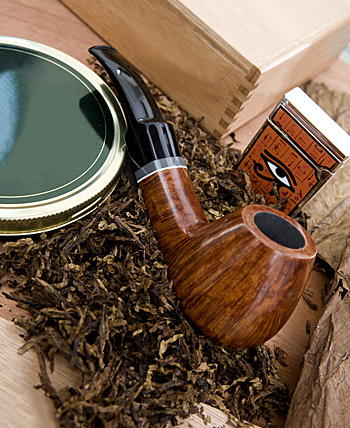 Michael D. wants to know: Would you ever attempt to recreate a blend like Bohemian Scandal without ready access to the requisite tobaccos? Have you matured beyond that point as a blender? Is Westminster proving to be superior as your skills develop and you become older? I would really love to hear your thoughts.
Michael D. wants to know: Would you ever attempt to recreate a blend like Bohemian Scandal without ready access to the requisite tobaccos? Have you matured beyond that point as a blender? Is Westminster proving to be superior as your skills develop and you become older? I would really love to hear your thoughts.
A: Bohemian Scandal simply cannot be made without the source leaf that made it what it was, in particular the vintage Syrian Latakia that we lost in the warehouse fire of 2004.
Syrian and Cyprian are very different beasts. They’re not different in the way that Cabernet grown in Napa is different from Cabernet grown in Bordeaux. They start as different leaf grown in different soil and climates, and after initial curing, they’re fumigated with different woods. The result is that Syrian is somewhat stronger, has a more terpene-like, piney character, whilst Cyprian is more earthy, more like leather and the smoke of a damp driftwood fire. Cyprian is also somewhat sweeter and less intense, so it works differently with the blend. They’re not interchangeable, so, there’s just no way to reformulate a blend like Bohemian Scandal using currently available tobaccos and have it taste anything like the original did. I’ve tried. I’ve played with different approaches, but nothing has satisfied me as even being close, and I’d much rather retire a blend forever than produce a shoddy counterfeit of it just to trade on the popularity of the name.
As for my “moving on,” there may be something to that, but it’s less a matter of maturing as a blender, though I certainly hope there’s some truth to that, and more a matter of just looking in new directions all the time, wanting to break out and try new things, new ways to present mixtures that have interesting and unique characteristics. Westminster was a bit of folly, my having a go at the original Dunhill London Mixture, and I think it falls fairly close to the mark, though only time will tell. (There’s an article on my site, “The Road to Westminster” that chronicles this blend’s development. With other blends, it’s more of a case of constant exploration coupled with easy boredom. I would say that if my skills are improving, and I hope they are, it’s likely by way of making it easier to hit those elusive mental targets with fewer shots.
From Bill: Are Lakeland mixtures classified in a separate category, like Balkan or English mixtures?
A: It’s tough to pin that one down. I think in most peoples minds, the “Lakeland style” is hallmarked by certain general strength and scent profiles, though I think that sells the tobaccos, as a group, a bit short. The two manufacturers in the Lake District, Gawith Hoggarth & Co. and Samuel Gawith, do a wide range of products that range from very floral to straight ahead latakia mixtures, and many things in between. Is there a “Lakeland” style? Arguably, yes, but it seems like a big stage with a cast of many different characters dancing about wildly.
What do the readers think? Please share your ideas in the comments section.
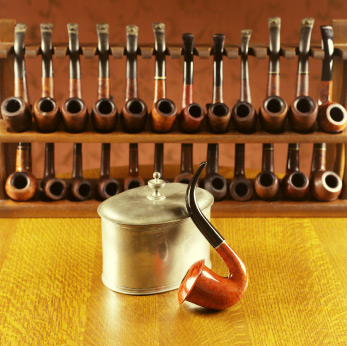 Brian asks a burning question: I see a lot of references to people smoking a pipe down to “dry gray ash.” For some reason, I don’t find that possible, or even desirable. At some point, the tobacco gets too hard to light and tastes harsh. Is smoking to the bottom really all that important? Am I doing something wrong?
Brian asks a burning question: I see a lot of references to people smoking a pipe down to “dry gray ash.” For some reason, I don’t find that possible, or even desirable. At some point, the tobacco gets too hard to light and tastes harsh. Is smoking to the bottom really all that important? Am I doing something wrong?
A: This is a great example of how similar we can be in our objective (enjoying the pipe), and how differently we might approach the act itself.
I almost always smoke to the bottom of the bowl. I don’t tend to pack very tightly, tamp delicately, and relight as often as I need to, which is sometimes 4 matches, sometimes more than a few more. On very rare occasions, meaning I think I might be able to count them on three fingers, I’ve managed to get to the bottom on a single light. But, this isn’t to say that mine is the right way; it’s just the way things have worked out for me over the years. I know other guys who pack more tightly, smoke more slowly, and still burn to the bottom. (I sometimes watch them in amazement, hoping that someday I’ll learn how to smoke a pipe like the grown-ups.) Still others only like the first half or three-quarters of the bowl. Bowl size, tobacco choice, technique and preference all play a part.
Once in a while, some tobacco just refuses to cooperate with my “technique,” and I end up with something in the bottom of the bowl that seems to be made from ground, creosote-soaked railway ties; at some point, the taste just turns a bad corner, wandering into a dark, thug filled alley, and I abandon the smoke before I get mugged. Fortunately, this doesn’t happen too often, and it’s always the tobacco that’s to blame, of course. Nothing could possibly be wrong with my inattentive, neglectful packing methodology or sloppy smoking technique, right?
Another thing to consider is that the possibility of tongue bite seems to increase during the final part of the bowl, so it might actually be beneficial to those who are prone to suffer from this particular malady to stop short. If you experience any change for the worse in your smoke, let it go, and don’t tempt the fates. (Another lesson I should learn myself.)
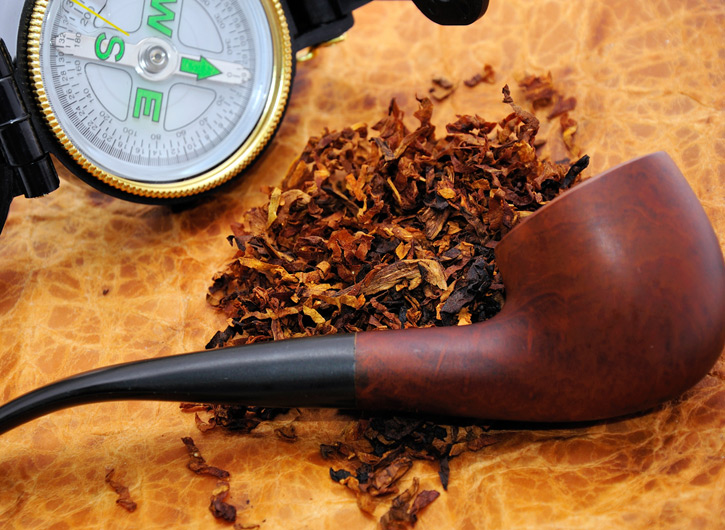
On those occasions when I can’t smoke to the bottom, I don’t consider it a waste. To my mind, if someone smokes beyond the point of pleasure, either because they’re working too hard at keeping the stuff lit, or because the taste has abandoned them, continuation strikes me as more wasteful than valorously proclaiming it the end of a good smoke, dumping whatever’s left, pressing the “Boldly Go” button and moving on. It’s about enjoyment.
When I worked at the tobacconist’s shop, I smoked a lot of cigars. Usually, when the cigar would reach the half way point, or a little farther, it would be building up more than I enjoyed, so I’d put it in the ashtray. A guy once asked, “Are you going to waste the rest of that cigar?” It seemed a peculiar question. I wasn’t wasting anything. I’d had a wonderful smoke, and to dilute the memory of it with even the possibility of the foul, acrid “puff of no return” would be the greater waste.
The only problems with not smoking to the end is the fact that your pipe will tend to accumulate more moisture, resulting in the dreaded “wet heel” or “soggy dottle,” and it will never develop a good bottom cake. Careful cleaning and letting the pipe rest well will solve the first, and if you never smoke to the bottom anyway, maybe the bottom cake doesn’t matter so much. Just be sure to keep the cake that does form neatly maintained to avoid strange thermal stresses to the wood.
All that to say, there are many ways to enjoy the pipe, and most of them are probably good. We all evolve as pipe smokers, and our tastes and techniques can change over time, especially if we’re chasing those wonderful, mythic smokes. The important thing, the only right thing, is to fasten your belt and enjoy the ride.
With apologies to Click and Clack, it’s happened again; you’ve squandered some perfectly good time reading another installment of Ask G.L. Pease. Keep those cards and letters coming, boys and girls. I need the work.
-glp
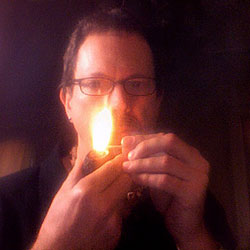 Since 1999, Gregory L. Pease has been the principal alchemist behind the blends of G.L. Pease Artisanal Tobaccos. He’s been a passionate pipeman since his university days, having cut his pipe teeth at the now extinct Drucquer & Sons Tobacconist in Berkeley, California. Greg is also author of The Briar & Leaf Chronicles, a photographer, recovering computer scientist, sometimes chef, and creator of The Epicure’s Asylum. See our interview with G. L. Pease here. |














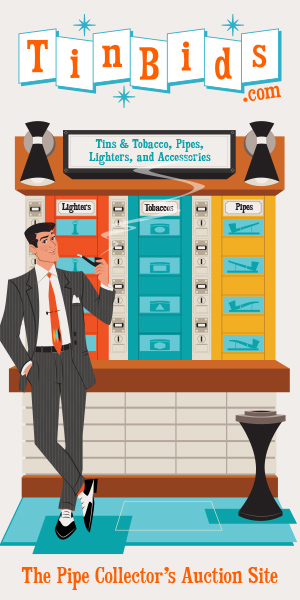

Another excellent article, thank you. I had been curious about he differences between Syrian and Cyprian Latakia. What a shame tha Syrian is gone.
Had to laugh at the “jet stove” as I got one a couple of years ago. It is bad to get forgetful and set the dials to season’s past. And, I do that from time to time. Also remember -25 degrees when you use convection. I didn’t mind when my phone pointed out I was passing my prime; but, darn, when my stove did it too?
As always a great informative read.
Greg, I think you gave a great answer about the “Lakeland style”, indeed, the moniker may be detrimental in some quarters because people may draw the incorrect conclusion that all the Gawith House blends from both blenders are scented, when they are not, and you were spot on to say “but it seems like a big stage with a cast of many different characters dancing about wildly”.
.
In my mind, when I hear the term “Lakeland”, I only apply it to the scented variety.
.
I have been fascinated by this topic before, trying to research it, but fell short of any definitive conclusions. Perhaps I should email the Gawith’s themselves and see what they say? That would probably be more helpful than my random speculation!
.
I had speculated that the Lakeland scents were derived from the great variety of snuff-flavorings used in the past, being that both houses traded heavily in that arena. Here is a thread I started on the subject, but it gets a bit silly at times:
.
https://pipesmagazine.com/forums/topic/lakelands-an-attempt-to-understand-the-famous-gawith-scents
.
Pomet reported the use of vanilla to perfume snuff in France circa 1694. I have no idea of the time period when it became popular to add scents/flavoring to smoking tobacco, although I’d reckon it could have been quite early, maybe due in part because early tobacco may have been somewhat harsh?
.
Circa 1899, a Mr. van Leenhoff, tobacco expert, says that there are hundreds of substances for flavoring tobacco. Among the more popular, he lists cascarilla, fennel, vanilla, nutmeg, saffron, rum, liquorice, glycerine, salt, molasses, lavender oil, musk, violet essence, oil of roses, oil of orange, tartar, coriander seed, opium, etc.
.
I love St. Bruno, it’s a flavored tobacco one could say, I think cascarilla bark and musk play major roles in its taste, although many people always mention bergamot too, the old recipe doesn’t mention that anywhere.
.
I think perhaps that there used to be quite a variety of scented/flavored bacca peculiar to British tastes, most of which have been lost to the fog of times past. But St. Bruno survives and I think maybe the marketplace was full of similar “soapy” stuff, but the Gawith Houses are just about the only survivors left in the UK and I consider some of their scented bacca to be done in the Old World style.
.
If the current blenders hadn’t toned down Erinmore and it was made as heavily perfumed as it used to be, many people would say it was a “Lakeland”, and some people say Condor is a “Lakeland”, but I think it’s just an old traditional UK processing method, both of these being from Ireland who cultivated their own distinct preferences. Now, since only the Gawith Houses are left making that particular scented/flavored type, they’ve become synonymous with that style.
.
Interesting footnote: tonka beans were once known as “snuff beans”, they were very popular with snuff-takers who would place a couple in their snuffbox.
I always think of “Lakeland” tobaccos as being the flakes and plugs heavily scented with Geranium, Rose and the like. It applies to the scented tobaccos of Gawith Hoggarth and British/Irish OTCs such as Condor and St. Bruno but not the scented tobaccos produced by Samuel Gawith which are very different. It always amuses and annoys me in equal measure when I read claims that unscented Samuel Gawith tobaccos are all tainted with Lakeland Essence because they never are and I would not smoke them if they were. I suspect some people confuse Samuel Gawith with Gawith Hoggarth who’s unscented tobaccos are frequently tainted with more than a hint of Lakeland. That or they are smoking in ghosted pipes.
Regarding St. Bruno. It is indeed flavoured with Cascarilla as is the liqueur Chartreuse. The Chartreuse monastery was founded by St. Bruno which would appear to explain the origin of the name.
Misterlowecase:
I was going to try to answer the question posed by Greg, but you beat me to it and were far more articulate than I would probably have been!
Like you, I think “Lakeland” is a term that describes a type of aromatic employing old-school English techniques and flavoring rather than a description of all tobacco from, say, the Gawiths. By that definition, Full Virginia Flake and Balkan Mixture are not Lakeland blends, even if they are manufactured in the Lake District. Kendal Flake and 1792, however, are exemplars of the Lakeland style. With this definition, one can describe blends like St. Bruno as a Lakeland without somehow implying it must be manufactured in the Lake District.
I’ve never heard anything on how the unique flavorings were introduced or when it happened, but I appreciate any light that may be thrown on the subject.
Greg
Great article.
Surprised at your weather – in my ignorance did not realise such temperatures reached the California coast even in an exceptional year. It makes our so far occasional brush with frost seem very mundane although the weather has been predominately wet, windy and miserable on the English East coast. Very much latakia weather and this year your Gaslight has proved an excellent rainy day smoke – by the way congratulations on its critical and commercial success (judging at least from Smoking Pipes published top ten). On Westminster’s qualities I can assure your readers that it would have fitted like a glove into the Alfred Dunhill hand blended range (available from their Jermyn Street shop only and the last bastion of their great tradition) in the late 80s although it does not have that very slight caramel taste (may have been due to a slight whisky topping – I once heard long ago they had a tradition of spraying their sample tubs with whisky to stop them drying out) that so many of their tobaccos did. Sadly although I tried London Mixture back in 79, before the fall in their mass market blends, it left me with no particular memory; I expect I was too smitten by 965 and did not give it enough attention.
My only comment on the Lakeland style that will not, hopefully, upset the Editor is my utter astonishment that it is part of the last surviving English tobacco manufacturing and has a large following in the USA, although admittedly the most popular tobacco from those suppliers is the fairly orthodox Full Virginia Flake. i am equally puzzled that Condor (an occasional smoke of mine between the end of Alfred Dunhill and discovering GLP) is seen as a Lakeland type tobacco. In the UK it used to be citric and spicy but I never tasted the dreaded roses and geraniums nor did it dry the mouth like so many of the lakeland offerings.
May your pipes be a solace to you all over the hurly burly of the coming festivities
Ed
scarborian,
Many thanks for the St. Bruno info. Very interesting and good to know!
.
As for the Lakeland terminology issue, I think it has pretty much stuck and is in widespread use to describe a distinct genre, but like much of the pipe-smoker’s vocabulary to describe tobacco variants, the term can get quite muddy and can vary from one person to the next, with individual hallmarks in the mind of whomever is using it to describe a tobacco.
.
Similarly, the terms English, Balkan, Scottish, et al, can mean different things to different people, or like how the terms “body”, “fullness” and “strength” are of a subjective matter.
.
Putting on my lexicographer’s cap, I can point to the usage of “Lakeland Mixture” used circa 1935 by James Illingworth Ltd. — but current and widespread usage seems to have developed as a quick shorthand on pipe forums.
.
It would seemingly constitute a specific category, gauging by how often the term is used (often incorrectly, as pointed out scarborian), a few US blenders use the term, H&H, Park-Lane, Watch City — and EA Carey UK makes something called Castle Blend, which I saw a picture of the tin and on it said “a traditional Lakeland pipe tobacco”, as well as Black Swan Shoppe using the term to describe Craven Green, and even some ‘vape juice’ called Will O’ Wisp claiming to be Lakeland flavored!
.
All that said, all bacca from Kendal ain’t Lakeland, as Greg and doctorthoss correctly pointed out.
.
Lakeland, in my personal lexicon only applies to the floral variety, I don’t consider tonquin or any of the other so-called “soapy” or musky flavors to be Lakeland, but that’s just me, and there’ll probably be slight variances of definition between everyone that uses the term, just like most of our other common vocabulary we use in trying to describe such an ineffable thing as the pipe smoking experience, it’s nearly impossible to precisely ascertain our grand sensorium, but it sure is alotta fun talking about it all with other enthused bacconauts!
= )
I also was going to try and answer the Lakeland thingy but Troy and my neighbour, Scarborian, have already done so very well.
Just to add that the natural flower, herb etc. additives, that were the only permitted essences that could be used under the old laws, created a very distinctive British taste upon which most of we Brit. Codgers were weaned.
Yet another great read… Thank you for writing it…. I constantly learn new things about the clan of the bowl… and this was very informative. Two Thumbs Up
Interesting exploration and feedback on the Lakeland topic–great can of worms to open up.
And thank you for addressing the issue of smoking to the bottom of a bowl; I find this to be a point particularly to be made to new pipe smokers.